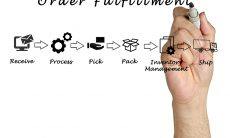One of these days, I’m going to find a ramshackle old barn, restore it, and convert it into a house. I just love the idea of living in a converted barn. And if I can manage a silo, maybe as a little retreat, that’d be great, too.
In the office, though, we have a strict No Silo policy.
Our goal is to have our team members–including members of the client team–think across departmental borders and to communicate across those borders, too. That communication allows us to devise solutions that are better than anything we could come up with by each of us sticking to our knitting.
Think about this: chances are, a graphic designer is not going to know much about the latest advances in coding. But if she and a coder talk with the marketer on the project about the goals for a particular web page, they’re more likely to come up with something that makes the most of the available technology.
You should consider this in your own sales and marketing, whether digital or traditional. Sales and marketing should work together. Marketing and customer service should collaborate. R&D teams certainly shouldn’t be isolated from customer-facing teams. There’s virtually no aspect of your business that wouldn’t be stronger with input from other teams whose perspectives will naturally differ.
We’ve long been proponents of the idea that form should follow function and that neither your technology nor your graphic design teams should be leading a web development project. Leadership rightly belongs to the marketing or communications professionals who’s are focused on who needs to be reached and what action is desired.
But even if that hierarchy is followed, your results will improve if you bring your team together, let members question one another, and brainstorm their way to building better mousetraps.
A by-product of this approach is that it’s a hell of a lot more fun working this way. You get to challenge others as they’re challenging you. But since the challenges are not direct–it’s not another designer daring you to be better than she is–it’s productive without being stressful.
We find it makes for teams that are more comfortable with one another, more capable of relying on one another, and more apt to probe in search of a solution that goes beyond the usual. That’s reflected in our work product and it will be reflected in yours if you encourage collaboration across traditional teams in all of your marketing work.





